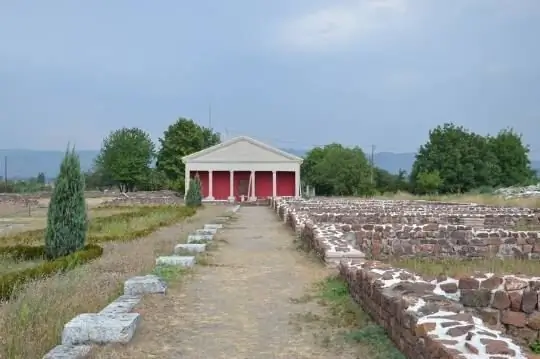
Description of the attraction
Mediana is an archaeological site of the Roman era, located in the city of Niš. In the vicinity of the city, this is not the only monument of this kind, but in Nis the remains of the villa and other structures are best preserved.
Naiss (the ancient name of Nis) was the hometown of the Roman emperor Constantine the Great. He was born in Naissa in 272. This ruler went down in history, among other things, by making Christianity the state religion of the Roman Empire and moving its capital to the city of Byzantium, which Constantine called the New Rome, which later became Constantinople. The Roman Empire, divided several times by his predecessors and successors, was a single state under the leadership of Constantine the Great.
As an emperor, Constantine often came to his hometown, where he built a luxurious palace for himself. Some decrees, especially in the last years of his life, were adopted in Naissa. After his death in 337, the residence was owned by his sons Constantius II and Constants. The imperial villa in Naissa also became the site of another historical division: in 364, the brothers Valentian and Valens met there, dividing the empire among themselves. The first of them was proclaimed emperor, but decided to share powers with his brother, taking the western part for himself, and he was given the eastern part of the empire. In 442, Naiss was destroyed by Attila and the villa was abandoned.
Mediana has been a particularly important archaeological site in Serbia since the late 70s of the last century. It is located on the banks of the Nishava River. This excavation area represents the remains of ancient Naissa. In addition to the villa, on this site there are preserved baths, which were built next to thermal springs, a water tower and a barn. On the east side, a nymphaeum adjoined the villa - a small sanctuary, which was dedicated to water deities (nymphs) and built next to water sources. Also on the territory of the villa there was a peristyle - an open courtyard surrounded on all four sides by columns. The villa has been decorated with numerous marble elements, frescoes and mosaics, sculptures. The area of the Median is about 40 hectares. Some of the finds made in this area are kept in the National Archaeological Museum here, in Nis.






